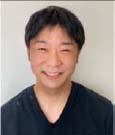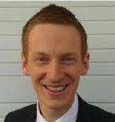|
|
|
| |
| ABSTRACT |
|
Recently, percussive massage (PM) intervention using a handheld percussive massage device, namely a massage gun, has been used as an easy way to perform vibration functions. Additionally, a product has been developed that allows PM intervention and heat application to be performed simultaneously. Thus, this study aimed to compare the acute effects of PM intervention with and without heat application on dorsiflexion (DF) range of motion (ROM), passive stiffness, and muscle strength in the gastrocnemius muscle. Fifteen healthy young men (20.9 ± 0.2 years) participated in this study. We measured the DF ROM, passive torque at DF ROM (an indicator of stretch tolerance), passive stiffness, and maximum voluntary isometric contraction (MVIC) torque of the plantar flexor muscles before and immediately after 120 seconds PM intervention with and without heat application. The results showed that PM intervention with and without heat application significantly increased DF ROM and passive torque at DF ROM and decreased passive stiffness, not MVIC torque. These results suggest that PM intervention increased ROM and decreased passive stiffness regardless of the presence or absence of the heat application. |
| Key words:
Range of motion, passive torque, stiffness, stretch tolerance, maximum voluntary isometric contraction
|
Key
Points
- We investigated the acute effect of percussive massage (PM) intervention with and without heat application on dorsiflexion range of motion (DF ROM), passive stiffness, and muscle strength in the gastrocnemius muscle.
- We measured the DF ROM, passive torque at DF ROM (an indicator of stretch tolerance), passive stiffness, and maximum voluntary isometric contraction (MVIC) torque of the gastrocnemius before and immediately after 120 seconds PM intervention with and without heat application.
- These results suggest that PM intervention increased ROM and decreased passive stiffness regardless of the presence or absence of the heat application.
|
Recently, percussive massage (PM) intervention using a handheld percussive massage device, namely a massage gun, has been used as an easy way to perform vibration functions in athletes' and patients’ self-care. A previous study showed that a single bout of PM intervention increased dorsiflexion (DF) ROM without changing muscle force (Konrad et al., 2020). In a systematic review of 11 papers, Ferreira et al. (2023) concluded that massage guns could effectively improve iliopsoas, hamstrings, triceps surae, and the posterior chain muscles' flexibility (Ferreira et al., 2023). However, to date not much is known about the mechanism of the increase in ROM following a PM treatment. In addition, a product has been developed that allows PM intervention and heat application to be performed simultaneously. Nakamura et al. (2023) showed that heat application alone increases DF ROM and decreases shear elastic modulus (Nakamura et al., 2023). Moreover, Nakano et al. (2012) concluded that heat application in combination with stretching produces a greater ROM effect than stretching alone (Nakano et al., 2012). Therefore, it is possible that PM intervention with heat application could produce a greater increase in ROM and a decrease in passive stiffness than PM intervention alone. Thus, this study aimed to compare the acute effects of PM intervention and PM intervention with heat application on DF ROM, passive stiffness, and muscle strength in the plantar flexor muscles. Experimental set-upA randomized, repeated-measures experimental design was used to compare the acute effects of PM with and without heat on plantar flexor muscles’ passive and active properties. The subjects' legs were randomly assigned to PM (percussive massage intervention) and Heat PM (percussive massage intervention with heat) conditions. The intervention order, whether PM or Heat PM, was also randomized. Outcome variables were measured before (PRE) and immediately after each condition's intervention (POST). We assessed ankle DF ROM, passive torque at DF ROM, passive stiffness, and maximum voluntary isometric contraction (MVIC) torque of the plantar flexor muscles, in this order, at both PRE and POST.
ParticipantsThe subjects were 15 healthy, nonathletic, young males with habitual physical activity (age 20.9 ± 0.2 years, height 171.5 ± 5.6 cm, weight 65.5 ± 8.0 kg). The target muscles were the plantar flexor muscles in both sides. Inclusion criteria were as follows: no regular resistance training within the past 6 months, no neuromuscular disease, and no history of orthopedic disease. None of the participants were competitive athletes or engaged in regular resistance training or stretching programs for the lower limbs (Nakamura et al., 2021e). The required sample size for a repeated-measures two-way analysis of variance (ANOVA) (effect size = 0.40 [medium], α error = 0.05, and power = 0.80) using G* power 3.1 software (Heinrich Heine University, Düsseldorf, Germany) was more than 14 participants. The effect size in the sample size was set based on the change in ROM according to a previous study (Konrad et al., 2020). We conducted this study with the approval of the university's Ethical Review Committee (Ethics approval number: #05-003).
DF ROM, passive torque at DF ROM, and passive stiffnessThe participants sat on a dynamometer chair (BIODEX system 3.0: BIODEX, Inc., Shirley, NY, USA), with the dominant leg fully extended at the knee joint and the ankle joint fixed to the footplate. The pelvis and distal thigh were fixed with a belt, and the hip flexion angle was set at 70° to prevent stretching of the sciatic nerve on the measurement side (Nakamura et al., 2012). The footplate of the dynamometer was passively and isokinetically dorsiflexed at a speed of 5°/s from the neutral anatomical position to the DF angle just before the subjects started to feel discomfort or pain (Akagi and Takahashi, 2013; Nakamura et al., 2020; Sato et al., 2020). Before the passive dorsiflexion assessment, two cycles of passive dorsiflexion were performed to familiarize the participants and to prevent a conditioning effect of passive stretching on muscle-tendon stiffness (Hirata et al., 2017; Konrad and Tilp, 2014; Nakamura et al., 2021e). In addition, investigators visually confirmed no heel displacement during passive stretching. After the subjects had completed familiarization trials, they stopped the dynamometer by activating a handheld safety remote button when they started to feel discomfort or pain, and the angle just before this point was defined as the DF ROM. In addition, passive torque at DF ROM was defined as the stretch tolerance (Mizuno et al., 2013; Weppler and Magnusson, 2010). Measurements were taken twice, and the average of these measurements was used for analysis. Based on a previous study (Fukaya et al., 2020), we calculated passive stiffness from the passive torque at DF ROM at a certain angle. For the calculation, the passive torque from the angle ranging from 50% of the smallest DF ROM to the maximum angle among the DF ROMs. The average of two measurements taken at PRE and PTS, respectively, was used in the analysis.
Maximum Voluntary Isometric Contraction (MVIC) measurementsIn a similar manner to the DF ROM measurements, participants were seated on an isokinetic dynamometer chair at a 0° knee angle concerning the dynamometer. The MVIC of the plantar flexor was measured with the ankle joint at the neutral position (neutral anatomical position = 0°). After several (3 or 4 repetitions) warm-up submaximal plantar flexion contractions, two MVICs were performed for 3-s with 60-s intervals (Kasahara et al., 2022). We observed that all participants could exert maximum muscle force within this 3-s period. Strong verbal encouragement was provided to promote maximal efforts by participants during contractions. The average value of the two MVICs was used for further analyses.
Percussive Massage (PM) and PM with Heat (Heat PM) interventionIn a similar manner to the DF ROM measurements, participants were seated on an isokinetic dynamometer chair at a 0° knee angle for the dynamometer. However, the ankle joint was set to 30° plantar flexion position to ensure that the calf muscles were relaxed. Using a massage gun, the same investigator applied the PM intervention with and without heat (D Exagan Hot & Cool, ream Factory, Umeda, Japan). This device provides percussions at 53 Hz (Konrad et al., 2020). The PM intervention, both with and without the application of heat, was administered to the medial and lateral gastrocnemius muscles, targeting a location at 30% of the lower-leg length, measured from the popliteal crease to the lateral malleolus, for 60 seconds each. The intervention sequence commenced with the medial gastrocnemius, followed by the lateral gastrocnemius. The attachment of the massage gun used in this study can be set to be heated, enabling simultaneous vibration and thermal stimulation. In this study, vibration stimulation was performed with the attachment heated to 39°C in the Heat PM condition. The same investigator performed both conditions. The investigator always tried to apply the same pressure to the skin (Konrad et al., 2020).
Statistical analysisWe used SPSS (version 24.0; SPSS Japan Inc., Tokyo, Japan) for the statistical analysis. The Shapiro-Wilk test was used to test the normality of the data. The PRE and POST values for each variable followed normality. For each variable, the unpaired t-test was used to compare PRE values between conditions. To analyze the interaction and main effects, all outcome variables were compared using a split-plot ANOVA (time [PRE vs. POST] and conditions [PM vs. Heat PM condition]). Classification of effect size (ES) was set where ηp2 < 0.01 was considered small, 0.02-0.1 was considered medium, and more than 0.1 was considered to be a large effect size (Cohen, 1988). A paired t-test test with Bonferroni correction was performed to compare the PRE and POST values in each condition to confirm a significant interaction or main effect. Additionally, we calculated Cohen’s d as ES for post-hoc test, with an effect size of 0.00-0.19, 0.20-0.49, 0.50-0.79, and ≥0.80 considered trivial, small, moderate, and large, respectively. To investigate the relationship between changes in DF ROM and changes in passive torque at DF ROM or passive stiffness, we used Spearman's rank correlation coefficient for those not following a normal distribution. A p value of <0.05 indicated statistical significance.
Comparison of variables in PRE values between PM and Heat PM conditionsPRE values showed no significance between both conditions for all variables (Table 1).
Changes in DF ROM, Passive Torque at DF ROM, Passive Stiffness, and MVICTable 1 shows the results of DF ROM, passive torque at DF ROM, and passive stiffness before and after the intervention. A split-plot ANOVA showed no significant interaction effects in all variables. Also, there were main effects of time for DF ROM, passive torque at DF ROM, and passive stiffness, but not in MVIC.
Relationship between change in DF ROM and passive torque at DF ROM or passive stiffnessSignificant positive correlations were found between changes in DF ROM and changes in passive torque at DF ROM in PM condition (p = 0.023, rs = 0.582, Figure 1-A) and Heat PM condition (p < 0.001, rs = 0.943, Figure 1-B). However, there were no significant correlations between changes in DF ROM and changes in passive stiffness in PM condition (p = 0.81, rs = -0.068, Figure 1-C) and Heat PM condition (p = 0.087, rs = 0.046, Figure 1-D).
This study investigated the combined effects of PM intervention and heat application on the triceps surae. The results showed that PM intervention significantly increased DF ROM and passive torque at DF ROM, an index of stretch tolerance, and decreased passive stiffness. In both PM and Heat PM conditions, DF ROM was associated with a change in passive torque at DF ROM but not a decrease in passive stiffness. In addition, adding heat application to the PM intervention had no synergistic effect on these changes. To the best of our knowledge, this is the first study to investigate the mechanism of ROM increase immediately after a PM intervention and the combination effect of heat application. The results of this study indicate that PM intervention, with or without heat application, could be a simple self-care technique that increases ROM and decreases passive stiffness without compromising muscular strength. In both PM and Heat PM conditions, DF ROM was significantly increased, which is partially consistent with the results of previous studies (Ferreira et al., 2023; Konrad et al., 2020; Kurt, 2015; Nakamura et al., 2021b), but inconsistent with some previous studies (Herda et al., 2009; Herda. T.J et al., 2010). Previous studies by Herda et al. (2009; 2010) investigated the acute effect of 20 minutes of local vibration on the Achilles tendon, but other previous studies investigated the effect of local vibration, like PM intervention like this study, on muscle. Differences in the location of this vibration stimulation may affect the increase in ROM differently. Interestingly, the present study extended these findings and revealed that the mechanism of the DF ROM increase was not significantly associated with a decrease in passive stiffness but was related to a change in passive torque at DF ROM, i.e., a change in stretch tolerance. The mechanism of the change in stretch tolerance in both PM and Heat PM conditions is unknown in this study. Some previous studies (Aboodarda et al., 2015; Behm and Wilke, 2019; Cavanaugh et al., 2017) suggested that the envisaged global pain modulatory response might be intricately connected to theories such as the gate control theory of pain, diffuse noxious inhibitory control, or alterations in the parasympathetic nervous system. Moreover, vibration stimulation may selectively induce activation through pressure and vibration, coupled with large rapid muscle contractions, thereby enhancing pain perception (Romero-Moraleda et al., 2019). Regardless of the presence or absence of heat application in the PM intervention, these mechanisms may have altered stretch tolerance, increasing ROM. However, the results support previous studies investigating the mechanism by which static stretching (Nakamura et al., 2021e) and foam rolling (Nakamura et al., 2021a) increase ROM. Interestingly, adding heat application to the PM intervention had no synergistic effect on changes in DF ROM and stretch tolerance. A previous meta-analysis study found a greater increase in ROM with heat application than with stretching intervention alone (Nakano et al., 2012). In the present study, heat application was performed simultaneously with PM intervention, whereas the previous study used heat application before stretching intervention. In addition, when the intensity of the stretching intervention was standardized, there was no synergistic effect of stretching intervention alone and stretching intervention with heat application on changes in ROM or muscle stiffness (Nakamura et al., 2021d). This study used the same vibration conditions for the PM and Heat PM conditions. Thus, it is possible that the changes in DF ROM and stretch tolerance were similar in the PM and Heat PM conditions. Passive stiffness was significantly decreased in both PM and Heat PM conditions, and previous studies using vibration foam rollers have shown that vibration significantly reduces shear elastic modulus (Nakamura et al., 2021c). In addition, vibration compression on the muscle belly alone could decrease shear elastic modulus (Nakamura et al., 2021b). Mechanoreceptors may be responsible for decreased shear elastic modulus during vibration stimulation (Behm and Wilke, 2019). On the other hand, adding heat application to PM intervention had no synergistic effect. The previous study showed a decrease in shear elastic modulus after 300 seconds of heat application (Nakamura et al., 2023). In the present study, the intervenetion duration was 60 seconds for MG and LG, respectively, for a total of 120 seconds. In addition, the temperature of the heat application used in this study was 39°C, which the low-temperature setting might have influenced. Further studies are needed to examine the synergistic effects of longer intervention times and higher temperatures on passive stiffness. In the present study, MVIC did not change in both PM and Heat PM conditions, supporting the results of previous studies (Ferreira et al., 2023; Konrad et al., 2020). These results suggest that PM intervention could increase ROM and decrease passive stiffness without decreasing muscle strength. Therefore, PM intervention may be effective as a warm-up tool in sports and rehabilitation regardless of heat application. The mechanism for the lack of change in muscle strength during PM intervention with and without heat application in this study is unknown. Previous studies suggested that vibration stimulation stimulates muscle receptors, increasing motor unit recruitment (Fallon and Macefield, 2007; Germann et al., 2018). Therefore, MVIC could increase, but on the other hand, in the present study, a reduction effect in passive stiffness occurred. This decrease in passive stiffness may have offset the effect of increased MVIC in vibration stimulation. The present study has several limitations. First, previous studies have shown that recovery is facilitated after PM intervention. Therefore, it is necessary to examine the synergistic effects of adding heat application to PM intervention as a fatigue recovery tool in the future. Second, the subjects of this study were limited to young men, and it is necessary to include other populations and females in future studies. Third, we did not investigate the various conditions of the percussive massage device such as intensity, duration, or frequency. Therefore, it is necessary to investigate this as well as the effect of heat application on the optimal PM condition in the future. Fourth, we did not measure the changes in muscle temperature after PM intervention, especially after Heat PM conditions. It is possible that the effect of the PM intervention in this study was similar regardless of heat application and that this was since no change in muscle temperature occurred. Therefore, detailed research, including changes in muscle temperature, should be conducted in the future. This study investigated the acute effect of heat application in combination with PM intervention using a massage gun. The results showed that the PM intervention increased ROM and decreased passive stiffness regardless of the presence or absence of the heat application.
| ACKNOWLEDGEMENTS |
This work was supported by JSPS KAKENHI with grant number 19K19890 (Masatoshi Nakamura), and the Austrian Science Fund (FWF) Project J4484 (Andreas Konrad). However, the funders had no role in the study design, data collection, and data analysis or in preparing this manuscript. The authors declare that there is no conflict of interest. The datasets generated and analyzed during the current study are not publicly available but are available from the corresponding author, who was an organizer of the study. |
|
| AUTHOR BIOGRAPHY |
|
 |
Masatoshi Nakamura |
| Employment: Associate professor, Faculty of Rehabilitation Sciences, Nishi Kyushu University, Saga, Japan |
| Degree: PhD |
| Research interests: Physical therapy, stretching, exercise physiology, flexibility |
| E-mail: nakamuramas@nisikyu-u.ac.jp |
| |
 |
Hironori Uchida |
| Employment: Undergraduate student, Faculty of Rehabilitation Sciences, Nishi Kyushu University, Saga, Japan |
| Degree: BSc student |
| Research interests: Physical therapy, massage gun, stretching, exercise, flexibility |
| E-mail: 20p004@mail2.nisikyu-u.ac.jp |
| |
 |
Yuta Murakami |
| Employment: Institute for Human Movement and Medical Sciences, Niigata University of Health and Welfare, Niigata, Niigata, Japan |
| Degree: BSc, MSc student |
| Research interests: Physical therapy, stretching, muscle stiffness, stretch tolerance |
| E-mail: hpm22003@nuhw.ac.jp |
| |
 |
Kazuki Kasahara |
| Employment: Institute for Human Movement and Medical Sciences, Niigata University of Health and Welfare, Niigata, Niigata, Japan |
| Degree: BSc, MSc student |
| Research interests: Physical therapy, foam rolling, stretching, performance, muscle strength |
| E-mail: hpm22005@nuhw.ac.jp |
| |
 |
Takaki Imai |
| Employment: Department of Rehabilitation, Kyushu University of Nursing and Welfare, Kumamoto, Japan |
| Degree: PhD |
| Research interests: Physical therapy, massage gun, shoulder joint |
| E-mail: t-imai@kyushu-ns.ac.jp |
| |
 |
Andreas Konrad |
| Employment: Institute of Human Movement Science, Sport and Health, Graz University |
| Degree: PhD, MSc |
| Research interests: Biomechanics, muscle performance, training science, muscle-tendon-unit, soccer science |
| E-mail: andreas.konrad@uni-graz.at |
| |
|
| |
| REFERENCES |
 Aboodarda S.J., Spence A.J., Button D.C. (2015) Pain pressure threshold of a muscle tender spot increases following local and non-local rolling massage. BMC Musculoskeletal Disorders 16, 265. Crossref |
 Akagi R., Takahashi H. (2013) Acute effect of static stretching on hardness of the gastrocnemius muscle. Medicine & Science in Sports & Exercise 45, 1348-1354. Crossref |
 Behm D.G., Wilke J. (2019) Do Self-Myofascial Release Devices Release Myofascia? Rolling Mechanisms: A Narrative Review. Sports Medicine 49, 1173-1181. Crossref |
 Cavanaugh M.T., Döweling A., Young J.D., Quigley P.J., Hodgson D.D., Whitten J.H., Reid J.C., Aboodarda S.J., Behm D.G. (2017) An acute session of roller massage prolongs voluntary torque development and diminishes evoked pain. European Journal of Applied Physiology 117, 109-117. Crossref |
 Cohen, J. (1988). Statistical power analysis for the behavioral sciences.,
Hillsdale, Routledge. |
 Fallon J.B., Macefield V.G. (2007) Vibration sensitivity of human muscle spindles and Golgi tendon organs. Muscle Nerve 36, 21-29. Crossref |
 Ferreira R.M., Silva R., Vigário P., Martins P.N., Casanova F., Fernandes R.J., Sampaio A.R. (2023) The Effects of Massage Guns on Performance and Recovery: A Systematic Review. Journal of Functional Morphology and Kinesiology 8. Crossref |
 Fukaya T., Nakamura M., Sato S., Kiyono R., Yahata K., Inaba K., Nishishita S., Onishi H. (2020) The Relationship between Stretching Intensity and Changes in Passive Properties of Gastrocnemius Muscle-Tendon Unit after Static Stretching. Sports (Basel) 8. Crossref |
 Germann D., El Bouse A., Shnier J., Abdelkader N., Kazemi M. (2018) Effects of local vibration therapy on various performance parameters: a narrative literature review. Journal of the Canadian Chiropractic Association 62, 170-181. |
 Herda .T.J, Ryan E.D., Costa P.B., Walter A.A., Hoge K.M., Uribe B.P., McLagan J.R., Stout J.R., Cramer J.T. (2010) Acute effects of passive stretching and vibration on the elctromechanical delay and musculotendinous stiffness of the plantar flexors. Electromyography, Clinical Neurophysiology 50, 137-148. |
 Herda T.J., Ryan E.D., Smith A.E., Walter A.A., Bemben M.G., Stout J.R., Cramer J.T. (2009) Acute effects of passive stretching vs vibration on the neuromuscular function of the plantar flexors. Scandinavian Journal of Medicine and Science in Sports 19, 703-713. Crossref |
 Hirata K., Kanehisa H., Miyamoto N. (2017) Acute effect of static stretching on passive stiffness of the human gastrocnemius fascicle measured by ultrasound shear wave elastography. European Journal of Applied Physiology 117, 493-499. Crossref |
 Kasahara K., Konrad A., Yoshida R., Murakami Y., Sato S., Aizawa K., Koizumi R., Thomas E., Nakamura M. (2022) Comparison between 6-week foam rolling intervention program with and without vibration on rolling and non-rolling sides. European Journal of Applied Physiology 122, 2061-2070. Crossref |
 Konrad A., Tilp M. (2014) Increased range of motion after static stretching is not due to changes in muscle and tendon structures. Clinical Biomechanics 29, 636-642. Crossref |
 Konrad, A., Glashüttner, C., Reiner, M.M., Bernsteiner, D. and Tilp, M.
(2020) The Acute Effects of a Percussive Massage Treatment
with a Hypervolt Device on Plantar Flexor Muscles' Range of
Motion and Performance. Journal of Sports Science and
Medicine 19, 690-694.
Pubmed |
 Kurt C. (2015) Alternative to traditional stretching methods for flexibility enhancement in well-trained combat athletes: local vibration versus whole-body vibration. Biology of Sport 32, 225-233. Crossref |
 Mizuno T., Matsumoto M., Umemura Y. (2013) Viscoelasticity of the muscle-tendon unit is returned more rapidly than range of motion after stretching. Scandinavian Journal of Medicine and Science in Sports 23, 23-30. Crossref |
 Nakamura M., Ikezoe T., Takeno Y., Ichihashi N. (2012) Effects of a 4-week static stretch training program on passive stiffness of human gastrocnemius muscle-tendon unit in vivo. European Journal of Applied Physiology 112, 2749-2755. Crossref |
 Nakamura M., Ishikawa T., Sato S., Kiyono R., Yoshida R., Morishita K., Konrad A. (2023) Time-Course Changes in Dorsiflexion Range of Motion, Stretch Tolerance, and Shear Elastic Modulus for 20 Minutes of Hot Pack Application. Journal of Sports Science and Medicine 22, 175-179. Crossref |
 Nakamura M., Onuma R., Kiyono R., Yasaka K., Sato S., Yahata K., Fukaya T., Konrad A. (2021a) The Acute and Prolonged Effects of Different Durations of Foam Rolling on Range of Motion, Muscle Stiffness, and Muscle Strength. Journal of Sports Science and Medicine 20, 62-68. Crossref |
 Nakamura M., Sato S., Hiraizumi K., Kiyono R., Fukaya T., Nishishita S. (2020) Effects of static stretching programs performed at different volume-equated weekly frequencies on passive properties of muscle-tendon unit. Journal of Biomechanics 103, 109670. Crossref |
 Nakamura M., Sato S., Kiyono R., Yoshida R., Murakami Y., Yasaka K., Yahata K., Konrad A. (2021b) Acute Effect of Vibration Roller With and Without Rolling on Various Parts of the Plantar Flexor Muscle. Frontiers in Physiology 12, 716668. Crossref |
 Nakamura M., Sato S., Kiyono R., Yoshida R., Yasaka K., Yahata K., Konrad A. (2021c) Comparison Between Foam Rolling With and Without Vibration on Passive and Active Plantar Flexor Muscle Properties. Journal of Strength and Conditioning Research. Crossref |
 Nakamura M., Sato S., Sanuki F., Murakami Y., Kiyono R., Yahata K., Yoshida R., Fukaya T., Takeuchi K. (2021d) Effects of hot pack application before high-intensity stretching on the quadriceps muscle. International Journal of Therapy and Rehabilitation 28, 1-10. Crossref |
 Nakamura M., Yahata K., Sato S., Kiyono R., Yoshida R., Fukaya T., Nunes J.P., Konrad A. (2021e) Training and Detraining Effects Following a Static Stretching Program on Medial Gastrocnemius Passive Properties. Frontiers in Physiology 12, 656579. Crossref |
 Nakano J., Yamabayashi C., Scott A., Reid W.D. (2012) The effect of heat applied with stretch to increase range of motion: a systematic review. Physical Therapy in Sport 13, 180-188. Crossref |
 Romero-Moraleda B., González-García J., Cuéllar-Rayo Á., Balsalobre-Fernández C., Muñoz-García D., Morencos E. (2019) Effects of Vibration and Non-Vibration Foam Rolling on
Recovery after Exercise with Induced Muscle Damage. Journal
of Sports Science and Medicine 18, 172-180
Pubmed |
 Sato S., Kiyono R., Takahashi N., Yoshida T., Takeuchi K., Nakamura M. (2020) The acute and prolonged effects of 20-s static stretching on muscle strength and shear elastic modulus. Plos One 15, e0228583. Crossref |
 Weppler C.H., Magnusson S.P. (2010) Increasing muscle extensibility: a matter of increasing length or modifying sensation?. Physical Therapy 90, 438-449. Crossref |
|
| |
|
|
|
|

